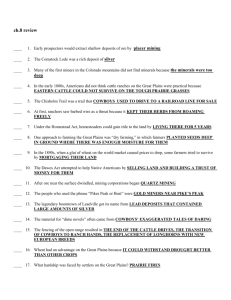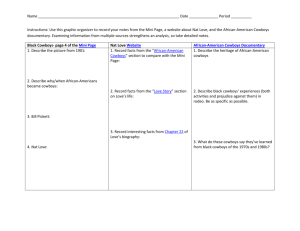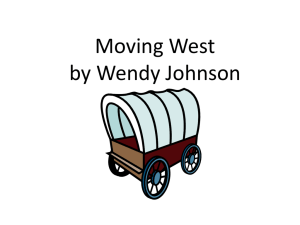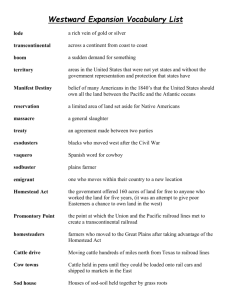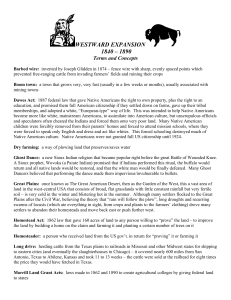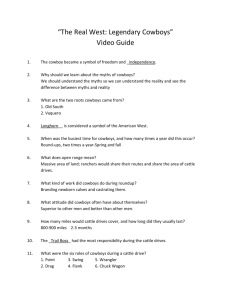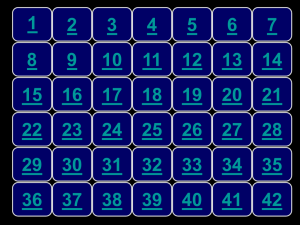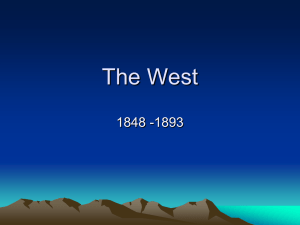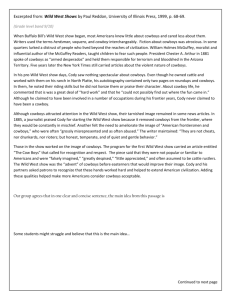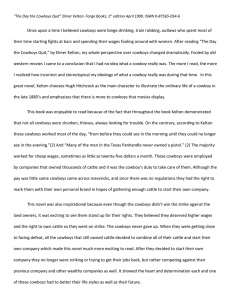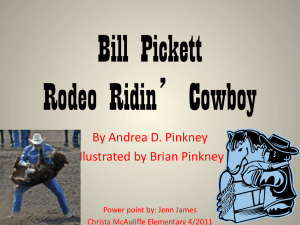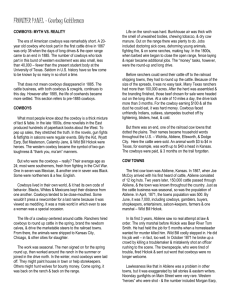Mr - Washougal School District
advertisement
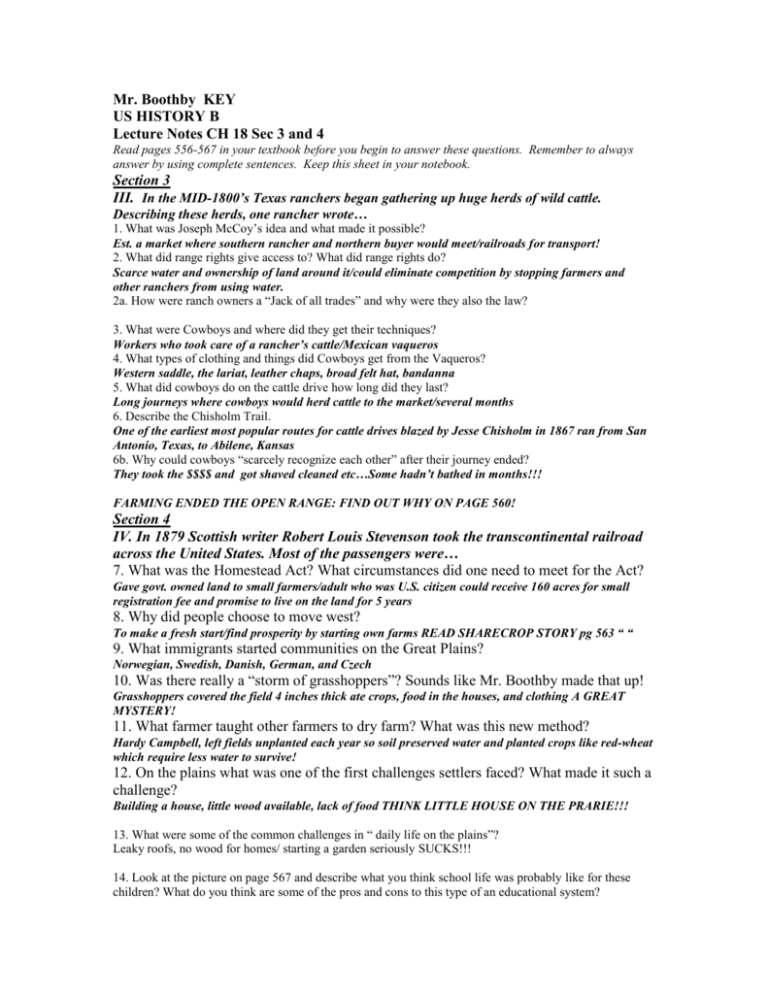
Mr. Boothby KEY US HISTORY B Lecture Notes CH 18 Sec 3 and 4 Read pages 556-567 in your textbook before you begin to answer these questions. Remember to always answer by using complete sentences. Keep this sheet in your notebook. Section 3 III. In the MID-1800’s Texas ranchers began gathering up huge herds of wild cattle. Describing these herds, one rancher wrote… 1. What was Joseph McCoy’s idea and what made it possible? Est. a market where southern rancher and northern buyer would meet/railroads for transport! 2. What did range rights give access to? What did range rights do? Scarce water and ownership of land around it/could eliminate competition by stopping farmers and other ranchers from using water. 2a. How were ranch owners a “Jack of all trades” and why were they also the law? 3. What were Cowboys and where did they get their techniques? Workers who took care of a rancher’s cattle/Mexican vaqueros 4. What types of clothing and things did Cowboys get from the Vaqueros? Western saddle, the lariat, leather chaps, broad felt hat, bandanna 5. What did cowboys do on the cattle drive how long did they last? Long journeys where cowboys would herd cattle to the market/several months 6. Describe the Chisholm Trail. One of the earliest most popular routes for cattle drives blazed by Jesse Chisholm in 1867 ran from San Antonio, Texas, to Abilene, Kansas 6b. Why could cowboys “scarcely recognize each other” after their journey ended? They took the $$$$ and got shaved cleaned etc…Some hadn’t bathed in months!!! FARMING ENDED THE OPEN RANGE: FIND OUT WHY ON PAGE 560! Section 4 IV. In 1879 Scottish writer Robert Louis Stevenson took the transcontinental railroad across the United States. Most of the passengers were… 7. What was the Homestead Act? What circumstances did one need to meet for the Act? Gave govt. owned land to small farmers/adult who was U.S. citizen could receive 160 acres for small registration fee and promise to live on the land for 5 years 8. Why did people choose to move west? To make a fresh start/find prosperity by starting own farms READ SHARECROP STORY pg 563 “ “ 9. What immigrants started communities on the Great Plains? Norwegian, Swedish, Danish, German, and Czech 10. Was there really a “storm of grasshoppers”? Sounds like Mr. Boothby made that up! Grasshoppers covered the field 4 inches thick ate crops, food in the houses, and clothing A GREAT MYSTERY! 11. What farmer taught other farmers to dry farm? What was this new method? Hardy Campbell, left fields unplanted each year so soil preserved water and planted crops like red-wheat which require less water to survive! 12. On the plains what was one of the first challenges settlers faced? What made it such a challenge? Building a house, little wood available, lack of food THINK LITTLE HOUSE ON THE PRARIE!!! 13. What were some of the common challenges in “ daily life on the plains”? Leaky roofs, no wood for homes/ starting a garden seriously SUCKS!!! 14. Look at the picture on page 567 and describe what you think school life was probably like for these children? What do you think are some of the pros and cons to this type of an educational system? Mr. Boothby US HISTORY B Lecture Notes CH 18 Sec 3 and 4 Name_____________________ Read pages 556-567 in your textbook before you begin to answer these questions. Remember to always answer by using complete sentences. Keep this sheet in your notebook. Section 3 III. In the MID-1800’s Texas ___________ began gathering up huge _______ of ________ cattle. Describing these __________, one rancher wrote… 1. What was Joseph McCoy’s idea and what made it possible? 2. What did range rights give access to? What did range rights do? 2a. How were ranch owners a “Jack of all trades” and why were they also the law? 3. What were Cowboys and where did they get their techniques? 4. What types of clothing and things did Cowboys get from the Vaqueros? 5. What did cowboys do on the cattle drive how long did they last? 6. Describe the Chisholm Trail. 6b. Why could cowboys “scarcely recognize each other” after their journey ended? FARMING ENDED THE OPEN RANGE: FIND OUT WHY ON PAGE 560! Section 4 IV. In ________ Scottish writer Robert Louis ______________ took the transcontinental ___________ across the United States. Most of the passengers were… 7. What was the Homestead Act? What circumstances did one need to meet for the Act? 8. Why did people choose to move west? 9. What immigrants started communities on the Great Plains? 10. Was there really a “storm of grasshoppers”? Sounds like Mr. Boothby made that up! 11. What farmer taught other farmers to dry farm? What was this new method? 12. What was one of the first challenges settlers faced on the plains? What made it such a challenge? 13. What were some of the common challenges in “ daily life on the plains”? 14. Look at the picture on page 567 and describe what you think school life was probably like for these children? What do you think are some of the pros and cons to this type of an educational system?
